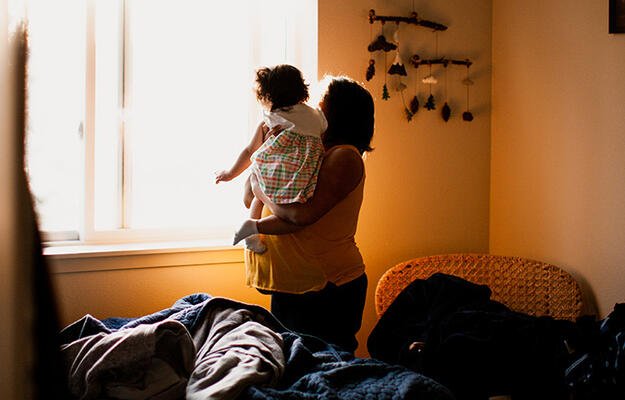
The Central Importance of Housing
by Veronica Gaitán
A recent Time article highlighted Secretary Ben Carson’s support for the US Department of Housing and Urban Development (HUD) program that designates $100 million each year to remove toxic lead-based paint from homes. “In an ideal world where we had a lot of money, we would just remediate all these homes,” Carson said. The former surgeon, who previously treated children in the Baltimore area, noted, “You get them well again and you send them into an environment that isn’t healthy.…This is an opportunity to close the loop.”
In addition to lead abatement assistance, HUD assistance provides a range of services for individuals and families of all ages, ethnicities, and abilities. Secretary Carson’s statements show that he understands that HUD programs for healthy housing matter, but does he truly understand HUD’s critical role as a springboard to a better life?
Childhood outcomes
More than 19 million children live in low-income homes with a high housing cost burden. This burden reduces families’ resources to spend on child enrichment items and activities and limits the neighborhoods where low-income families can afford live, affecting parents’ ability to send their kids to highly ranked schools. Unequal access to high-performing schools exacerbates educational gaps that start early in life. For example, parents of young children who are among the top 25 percent of earners are more than twice as likely to have at least 10 books in their home than parents in the bottom quartile for earnings, and wealthier mothers are more than 50 percent more likely to read to their child three or more times a week. Additionally, children born to low-income parents are less likely to attend preschool than their more affluent counterparts in middle- or high-income households.
Housing unaffordability also leads to problems with housing quality and instability, which can have detrimental effects on children’s mental and physical health. Research shows that lead exposure in the home is associated with lower test scores and that children who live in households receiving HUD assistance have lower blood lead levels than nonassisted children in low-income families. Research has also found that poor physical housing conditions, such as home hazards, crowding, and clutter, are associated with worse psychological health both in the short and long term.
Housing assistance gives children in low-income households the opportunity to improve and succeed academically, maintain their health and well-being, and achieve financial success later in life, while reducing costs to society in the long term.
Adulthood outcomes
When families can afford rent, everyone benefits. Housing vouchers have been found to improve parenting behaviors, perhaps because they reduce daily household stress. Research suggests that people receiving HUD housing assistance have better physical and mental health than people on waiting lists for housing assistance. One study showed that receiving a housing voucher to move from a low-poverty area resulted in lower rates of diabetes among women 10 to 15 years later.
Rental assistance programs can also provide a crucial stimulus for upward economic mobility. The Jobs-Plus Community Revitalization Initiative for Public Housing Families has been instrumental in helping working age adults modestly increase their earnings and created an increase in work effort at participating developments that lasted even after the program ended. HUD’s Family Self-Sufficiency Program strives to increase housing subsidy recipients’ financial capabilities through a rent-based savings account that has been effective when paired with coaching, peer mentors, and other motivational strategies.
Seniors and the disabled
Housing Plus services provided in HUD-assisted senior housing developments reduce hospital admissions among residents and increase the number of residents who seek treatment for urgent medical issues, improving their health statuses. About two-thirds of HUD-assisted senior housing properties surveyed in a study reported having a service coordinator, a key factor in improved senior health outcomes.
Another study highlights the major impact that federally subsidized housing has on the lives of people with disabilities, finding that the incidence of disability for HUD-assisted households is highest among those who earn the lowest incomes. But the prevalence of this population could be even higher than the data suggest.
"For me, success is not how many people we get into public housing, but how many we get out,” said Secretary Carson. "How many people do we give the life skills that will allow them to be independent?"
It starts with housing: 8.3 million renter households spent more than half their income on housing, lived in severely substandard housing, or both in 2015. And more than half of households that receive federal rental subsidies are headed by disabled people or older Americans. "A family or an individual cannot think about bettering themselves if they have unstable housing," said Stephen Glaude, a HUD deputy undersecretary to President George H. W. Bush. "If they're worried about where they're going to live, they can't think about career, they can't think about education, they can't think about upward mobility."
How can Secretary Carson reconcile his goal of getting people out of public housing with the realities behind these numbers?
HUD’s goal should be to use its resources to protect the health and well-being of seniors and people with disabilities while providing a supportive pathway out of HUD assistance for everyone else. That means changing how we think about HUD assistance and especially the people who receive it.


